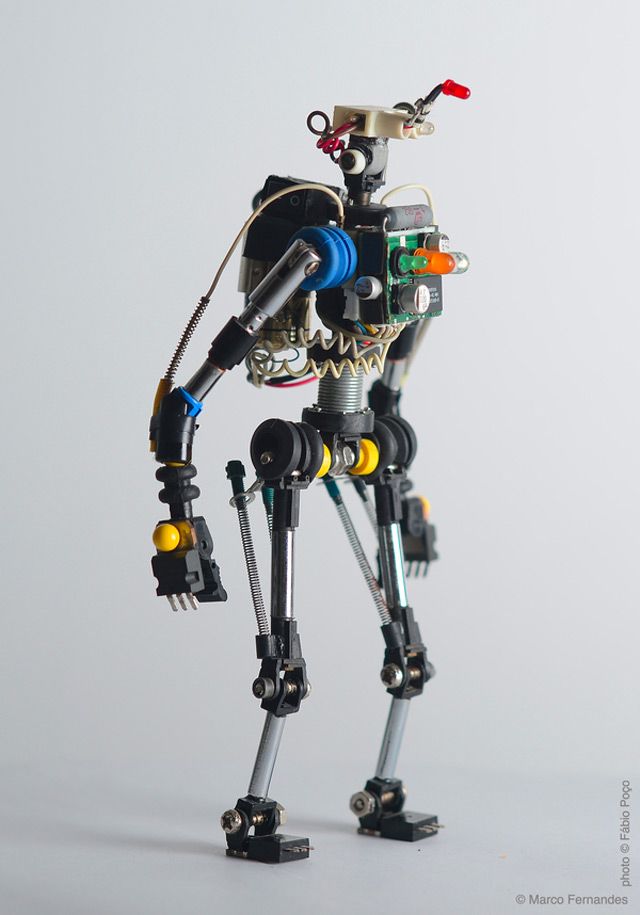Creating an E-Waste Instructables Robot can be an exciting and creative project. You can turn an old power bank into a cute little robot that you can enjoy with friends and family. You can also learn how to recycle e-waste, and make art with it.
Repurposing Old Power Banks
Having a battery-powered smartphone has become the norm for a growing number of millennials. The battery-laden mobile device has spawned a whole host of hacks and dodgy hacks. To combat the aforementioned shenanigans, a well-crafted solution was needed. In short, the power bank came into being. To help get the ball rolling, REWA, the aforementioned nonprofit teamed up with one of the nation’s leading mobile tech firms, to offer a no-obligation mobile device exchange. It’s a win for all involved. Besides, REWA was kind enough to make a well-informed decision on my behalf. This win-win combo has resulted in a happier smartphone user and a happier environment overall. Moreover, the company’s mobile device exchange has an impressive track record of delivering mobile device solutions to Thai mobile phone connoisseurs.
The mainstay of the exchange is a plethora of new and used mobile devices, from mobile phones and tablets to laptops and smartphones. The aforementioned mobile device exchange has a revolving door for mobile devices and is a convenient and cost-effective way to deal with unwanted mobile device clutter.
Recycling e-waste
Using a robotic device to recycle e-waste is a fairly new concept. It would streamline the recycling process by making it easier to recover valuable components from discarded electronics.
Robotics and artificial intelligence (AI) have the potential to revolutionize the way we recycle electronic waste. Currently, recycling companies are less likely to recycle complex garbage like old electronics. This is because the devices are made of precious materials and can be hard to break down.
A new research project is looking to develop AI-powered tools for robotic recyclers. These tools will classify e-waste and extract the most valuable components from the trash.
The new tool will be able to identify the type of smartphone, identify the components that are most valuable and take them out of the trash. This could make the recycling process faster and more cost-effective.
Researchers at Carnegie Mellon University’s Biorobotics Lab recently collaborated with Apple on an e-waste sorting project. Apple’s recycling robot, Liam, could deconstruct an iPhone in 11 seconds. However, the robot is only designed to recycle iPhones.
Researchers are now working on a new type of jack-of-all-trades robot that could help recycle smaller electronics. The machine is designed to break up waste, remove batteries, and harvest valuable components. It isn’t commercialized yet, but it could significantly improve recycling efforts.
Turning E-waste Into Art
Rather than throwing away e-waste, artists are turning it into beautiful pieces of art. E-waste, also known as electronic waste, is created when used equipment becomes obsolete. It can also contaminate the environment and soil.
Artists are turning e-waste into art in order to raise awareness about the importance of protecting the environment. Some artists use low-tech mediums to make the most of e-waste while others use high-tech mediums to make connections between old and new technology.
Hari Naatesan started recycling e-waste in 1999. He started out by using discarded electronic scrap from thrift stores and dump yards. Now, he has turned hundreds of tonnes of e-waste into art installations. Some of his creations include a Volkswagen Beetle, complete with a barbecue stick and 60 motherboards. Eventually, he moved to Mumbai and began making sculptures from everyday scrap.
Yusef Merhi, a Venezuelan coder, has been making digital art since 1985. He recently completed a series of art pieces titled “Perfect Language”. This series explored the impact of technology on everyday life. In addition, he has worked with the Kindness Project to educate children on how to safely handle e-waste.
Joseph Awuah-Darko, a British-born Ghanaian, has ambitious plans for an Agbogbloshie dumping ground in Ghana. He hopes to use the site to build furniture and exhibit his creations at major galleries around the world.
